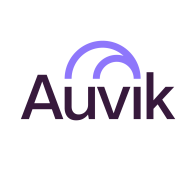

Azure Monitor and Auvik Network Management compete in the network monitoring and management category, with Azure Monitor having an edge in cloud-based environments due to its strong integration with the Microsoft ecosystem.
Features: Azure Monitor provides comprehensive cloud-based monitoring capabilities, robust analytics tools, excellent data collection, scalability, and integration with Power BI. Auvik Network Management focuses on network discovery, configuration backup, alerting systems, intuitive usability, and ease of deployment.
Room for Improvement: Azure Monitor faces challenges regarding cost-related data ingestion, UI complexity, and proactive monitoring features. Users also desire better integration with other cloud providers and enhanced visualization tools. Auvik Network Management could improve in areas like reporting systems, alert customization, network mapping, integrations, and pricing.
Ease of Deployment and Customer Service: Azure Monitor offers ease and flexibility through cloud deployment and seamless integration within the Microsoft ecosystem; however, it is seen as complex and receives mixed reviews on technical support. ANM is praised for its straightforward setup and proactive technical support.
Pricing and ROI: Azure Monitor adopts a pay-as-you-go model, seen as complex due to data ingestion costs, but offers good ROI for Microsoft customers. ANM's device-based pricing is transparent, budget-friendly, and provides significant value, especially for mid-sized firms and MSPs, appealing to those seeking predictable costs.
Auvik Network Management has definitely helped reduce business disruptions related to network issues.
Auvik Network Management saves me 40% to 50% of our time.
If the network goes down, Auvik Network Management (ANM) opens a ticket, and then we begin working on it.
Azure Monitor helps prevent impacts on their system.
They were knowledgeable and responded quickly with accurate and useful information.
They introduced the product to us and explained how to deal with it.
I would give Auvik Network Management support a ten out of ten.
However, the second-line support is good.
Users end up getting no resolution from their team because they're outsourced vendors, and they don't have deeper expertise over any of the products they are referring to.
I would rate the support for Azure Monitor as a seven.
The platform scales well and supports our organizational needs.
It was capable of handling all those clients perfectly.
We keep adding sites into Auvik Network Management, and it doesn't seem to affect performance or anything on our end.
Azure Monitor is very scalable; there are no issues with scalability for different kinds of businesses.
A lot of platforms, especially when it comes to CRMs, CMSs, and ERPs, are still built on PHP and MySQL, which I feel is archaic now and slow to query.
In terms of stability, I would rate Auvik Network Management as a ten out of ten, as it does not experience jitter or other major issues.
Auvik's automated reporting system also details interferences or any lagging other than outside interference from electrical sources.
Azure Monitor is working fine, yet I face a costing issue as if there are a lot of logs collected in the workspace or in the center, it becomes very costly.
We were unable to integrate Auvik with a geographical map, which limited our ability to track issues to specific buildings on campus.
Enhancements in API functionality and wider tool support for integration with PSA or RMM tools.
Auvik does a good job of nesting those devices. For example, a bunch of different servers will all be nested in one icon on the map, and when opened up, all those multiple servers can be seen.
If Azure Monitor can independently add one gigabyte, two gigabytes, or five gigabytes at least to log storage, I can fix the logs without syncing with Log Analytics Workspace and Sentinel.
The cost skyrockets once you start using it, and there are complaints that the actual cost of the Kubernetes cluster was less than the cost they were incurring for Azure Monitor.
The challenges with Azure Monitor are that it's initially complex to set up because you need multiple components.
Auvik is pricey, and we were paying a lot for it, especially when compared to SolarWinds.
The pricing for Auvik Network Management (ANM) is great; it is comparable to other solutions, and for what it does, it actually provides more value for the money than some of the other major competitors.
Auvik Network Management (ANM) pricing or licensing is about 2,500 per year for approximately 4,000 endpoints, which is quite reasonable.
When I export logs into the application, workspace, log analytic workspace, and into Sentinel to read reports, I need to add storage, which increases the cost.
Auvik Core's ease of use also enhanced troubleshooting speed and efficiency.
Its proactive monitoring and simplified troubleshooting have significantly impacted our efficiency in handling network management tasks.
We can go to different places and monitor, check, configure, and analyze traffic.
The alerting features definitely help in reducing operational downtime for my customers by allowing us to get notifications in advance and take active actions.
Resource monitoring is essential.
The ease of access in Azure is significant because it's native to the platform and easy to integrate.
| Product | Market Share (%) |
|---|---|
| Azure Monitor | 5.0% |
| Auvik Network Management (ANM) | 1.1% |
| Other | 93.9% |


| Company Size | Count |
|---|---|
| Small Business | 140 |
| Midsize Enterprise | 31 |
| Large Enterprise | 21 |
| Company Size | Count |
|---|---|
| Small Business | 23 |
| Midsize Enterprise | 6 |
| Large Enterprise | 29 |
Auvik Network Management provides comprehensive network monitoring with competitive pricing, offering advanced features and free management of non-critical devices.
Auvik Network Management is known for its intuitive interface and real-time network visibility. Users benefit from features like automated network discovery, mapping, alerting, and TrafficInsights for cost-effective bandwidth monitoring. Its integration with ConnectWise and ticketing systems enhances device inventory updates, SNMP monitoring, and network troubleshooting. However, improvements are needed in reporting, integration capabilities, network map accuracy, customization, and alert configuration. Users suggest expanding device support and improving navigation and monitoring features.
What are Auvik's most important features?Auvik Network Management is widely used by managed service providers and enterprises for network monitoring across industries. It enables efficient management of firewalls, switches, routers, and ensures connectivity over multiple locations. This solution aids in identifying issues, automating backups, and facilitating remote access, offering critical insights on network traffic and device performance. Companies leverage its features to enhance network management and performance.
Azure Monitor is a comprehensive monitoring solution offered by Microsoft Azure. It provides a centralized platform for monitoring the performance and health of various Azure resources, applications, and infrastructure.
With Azure Monitor, users can gain insights into the availability, performance, and usage of their applications and infrastructure. The key features of Azure Monitor include metrics, logs, alerts, and dashboards. Metrics allow users to collect and analyze performance data from various Azure resources, such as virtual machines, databases, and storage accounts.
Logs enable users to collect and analyze log data from different sources, including Azure resources, applications, and operating systems. Azure Monitor also provides a robust alerting mechanism that allows users to set up alerts based on specific conditions or thresholds. These alerts can be configured to notify users via email, SMS, or other notification channels. Additionally, Azure Monitor offers customizable dashboards that allow users to visualize and analyze their monitoring data in a personalized and intuitive manner.
Azure Monitor integrates seamlessly with other Azure services, such as Azure Automation and Azure Logic Apps, enabling users to automate actions based on monitoring data. It also supports integration with third-party monitoring tools and services, providing flexibility and extensibility.
Overall, Azure Monitor is a powerful and versatile monitoring solution that helps users gain deep insights into the performance and health of their Azure resources and applications. It offers a wide range of features and integrations, making it a comprehensive solution for monitoring and managing Azure environments.
We monitor all Cloud Monitoring Software reviews to prevent fraudulent reviews and keep review quality high. We do not post reviews by company employees or direct competitors. We validate each review for authenticity via cross-reference with LinkedIn, and personal follow-up with the reviewer when necessary.